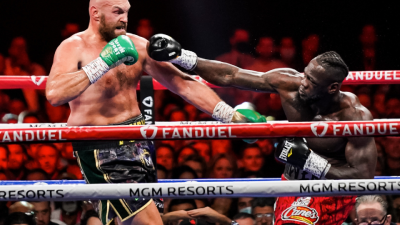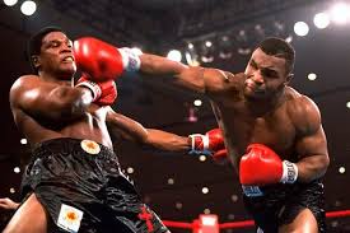
Wondering how many rounds in boxing match? Whether you’re new to the sport or a casual fan, understanding the structure of boxing rounds across styles and competition levels is essential. Rounds in Boxing isn’t one-size-fits-all—round lengths and total rounds can vary based on the type of boxing, event level, and governing body.
This article breaks down the boxing rounds explained by professional, amateur, Olympic, and style-based categories.

Content
Understanding the Different Types of Boxing
English Boxing
English boxing, also known as traditional or Western boxing, is the most well-known form. It’s governed by organizations like the WBA, WBC, IBF, and WBO.
In professional boxing, the number of rounds depends on the fight’s significance:
- 4, 6, 8, or 10 rounds are common for undercard and early career fights.
- 12 rounds are the standard for championship bouts.
Each round lasts 3 minutes, with a 1-minute rest in between.
The number of Rounds in Boxing is strictly regulated. Since the 1980s, title bouts have been capped at 12 rounds, down from the original 15, for safety reasons. This standardization allows for more strategic pacing and reduces the risk of long-term injuries.
Amateur Boxing
How many rounds in boxing? Typically, amateur matches consist of 3 rounds, each 3 minutes long for men and 2 minutes for women. These bouts are judged more on technical skill and point scoring rather than knockouts.
Amateur boxing is often a stepping stone to the professional level and is common in youth competitions and international games. Because of the emphasis on safety and development, these matches feature protective headgear and shorter durations.
Olympic Boxing
How many rounds in Olympic boxing? Matches in the Olympics follow amateur regulations but with minor adjustments depending on the tournament and age group. Currently, both male and female boxers fight 3 rounds of 3 minutes in Olympic settings. Scoring is done electronically, focusing on clean hits.
Olympic boxing is known for its emphasis on skill, stamina, and speed, making it distinct from more physically aggressive professional bouts.
French Boxing (Savate)

French boxing, or Savate, is a European martial art that blends traditional boxing with foot strikes. Matches are typically composed of:
- 3 to 5 rounds
- Each round is 2 minutes long
- Rules vary slightly between amateur and professional levels
Savate is highly technical, and points are awarded for clean technique rather than brute force. Protective gear is often used, especially in amateur competitions. The focus here is more on elegance and precision than on power.
Savate has grown in popularity across Europe and has carved a niche as a sophisticated alternative to traditional boxing.
Muay Thai
Also known as Thai boxing, Muay Thai is a full-contact sport involving punches, elbows, knees, and kicks. It is rooted in Thai culture and often includes ceremonial performances before fights.
- Professional Muay Thai fights typically consist of 5 rounds, each lasting 3 minutes.
- Amateur fights might be 3 rounds with slightly reduced intensity.
One unique aspect of Muay Thai is the Wai Khru Ram Muay, a traditional pre-fight dance that honors trainers and ancestors. This blend of culture and combat makes Muay Thai a standout in the global fighting scene.
Kickboxing
Kickboxing combines the techniques of punching and kicking, and it borrows structural elements from both boxing and martial arts.
- Most matches have 3 to 5 rounds
- Each round can be 2 or 3 minutes long
Kickboxing organizations like Glory or K-1 have their own specific rules, but the essence remains: blend speed, power, and stamina over short bursts. Standard boxing rounds do not apply directly to kickboxing, but the influence is clear.
Lethwei
Lethwei, also called Burmese boxing, is considered one of the most brutal forms of combat sports. Unlike other styles, Lethwei allows headbutts, and fighters use bare knuckles.
- 5 rounds of 3 minutes
- Draws are common if no knockout occurs
There are no point systems in traditional Lethwei—victory is achieved only by knockout. That makes the pacing and intensity of each round significantly higher than in other styles.
Professional Boxing: The Global Standard

To circle back, how many rounds are in professional boxing depends largely on the stage of the boxer’s career:
- Debut/early career: 4 or 6 rounds
- Mid-tier fighters: 8 or 10 rounds
- Title fights: 12 rounds (universally adopted since the late 1980s)
This structure balances entertainment, strategy, and athlete safety. Conditioning, game planning, and mental toughness are essential to manage these longer bouts.
The number of rounds in title boxing match is not only a test of endurance but also of strategy—boxers pace themselves to peak in later rounds while managing early threats.
Boxing Rounds Explained: What It Means for Fans
So, what does it mean when someone says “standard boxing rounds”?
In summary:
- Amateur/Olympic boxing: 3 rounds
- Professional non-title bouts: 4–10 rounds
- Professional title bouts: 12 rounds
- Other styles (Muay Thai, Savate, etc.): 3–5 rounds depending on tradition
Understanding how many rounds in boxing gives fans better insight into the fighter’s tactics, physical preparation, and overall pacing. Not all fighters train the same way, and knowing the format can help you appreciate the nuances of each match.
Boxing matches vary in length, typically ranging from 3 to 12 rounds depending on experience and event type. Each round tests stamina and skill, while organizers often invite sponsors to advertise with us, boosting visibility and engagement.
Conclusion
Whether you’re following a professional title match or watching an Olympic bout, knowing how many rounds in boxing helps you appreciate the sport on a deeper level. The structure varies across formats—from 3-round amateur bouts to 12-round title fights—and changes depending on the style, tradition, and level of competition.
By understanding how different rules apply across professional boxing, amateur boxing, Olympic boxing, and combat styles like Muay Thai, Savate, and Lethwei, you’ll see that boxing is not just about fists—it’s about form, endurance, and strategy. Find out why a boxing gym is the ideal place for beginners to build skills, fitness, and confidence from day one.
FAQs About Rounds in Boxing
Q1: Why are professional title boxing matches 12 rounds?
A: Title bouts were reduced from 15 to 12 rounds in the late 1980s for fighter safety. The shorter format minimizes the risk of brain injuries while still allowing a competitive and strategic fight.
Q2: Do women fight fewer rounds than men in boxing?
A: In many amateur and Olympic matches, women’s bouts are typically 3 rounds of 2 minutes, while men’s are 3 rounds of 3 minutes. In professional boxing, this may vary by organization and location.

Eldon Barrett’s knowledge of sports is boundless. His in-depth analysis and captivating storytelling will make you see the games you love in a whole new light.

